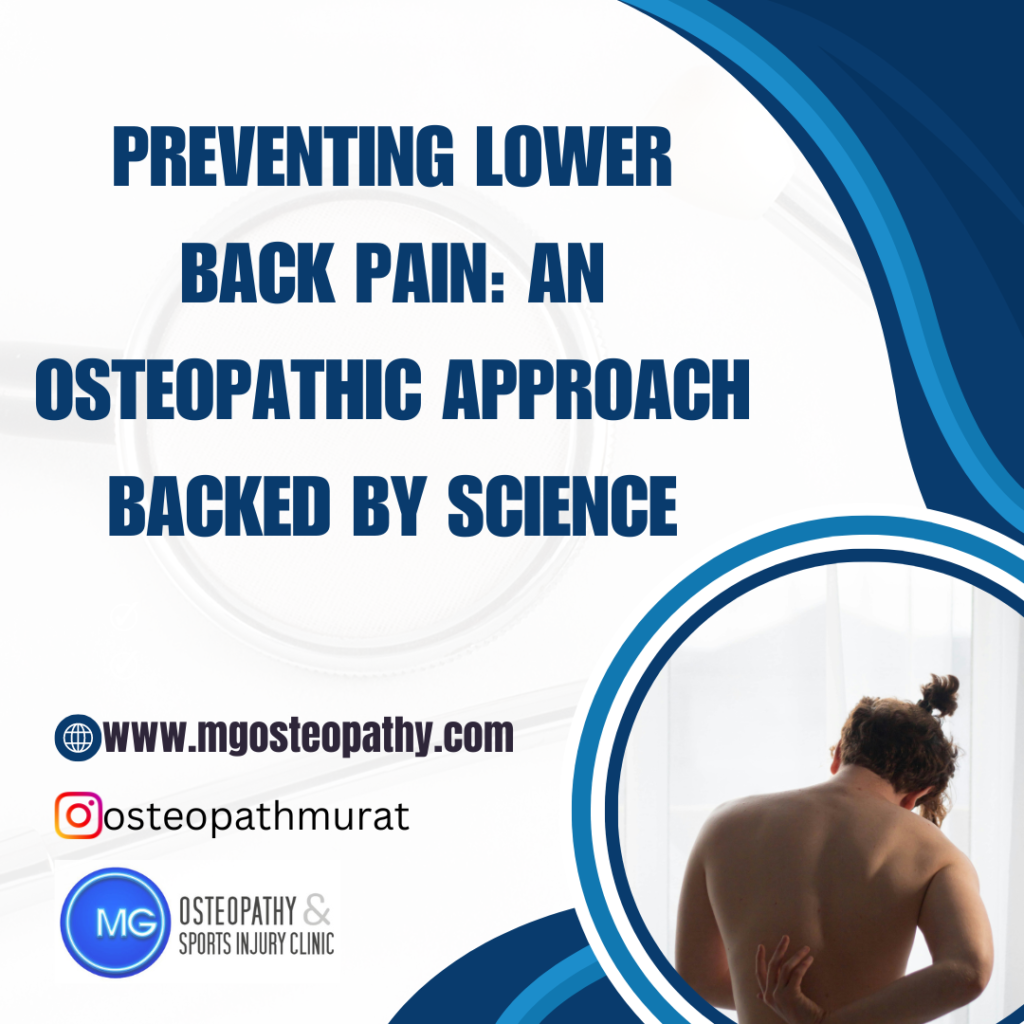Lower back pain is a common ailment affecting millions of people worldwide, impacting their quality of life and productivity. Fortunately, there are effective strategies to prevent and manage low back pain involving exercises, many of which are supported by Osteopathic principles and recent scientific insights. In this blog, we will explore these strategies and link them to the latest protocols discussed by Dr. Andrew Huberman, a renowned neuroscientist, in his podcast on strengthening and pain-proofing your back.
Understanding Low Back Pain
Low back pain can arise from various factors, including poor posture, muscle imbalances, sedentary lifestyles, and improper lifting techniques. It can also be exacerbated by stress and psychological factors. The pain can range from a dull ache to sharp, debilitating pain, making it crucial to adopt a proactive approach to prevention and management.
Osteopathy: A Holistic Approach
Osteopathy is a branch of medical practice that emphasizes the body’s ability to heal itself. Osteopaths use manual manipulation techniques, along with conventional medical treatments, to improve health and alleviate pain. The Osteopathic approach to preventing and managing low back pain involves:
- Manual Therapy: Techniques such as spinal manipulation and mobilization to improve joint function and reduce pain.
- Exercise Prescription: Tailored exercise programs to strengthen core muscles and improve flexibility.
- Postural Education: Teaching patients how to maintain proper posture in daily activities.
- Lifestyle Modifications: Advising on ergonomics, diet, and stress management to support overall health.
Dr. Andrew Huberman’s Protocols
Dr. Andrew Huberman, a professor of neurobiology at Stanford University, has shared valuable insights on strengthening and pain-proofing your back in his podcast. Here are some of his key protocols that align well with Osteopathic principles:
- Strengthening the Core: Dr. Huberman emphasises the importance of core strength in preventing low back pain. A strong core supports the spine and reduces the risk of injury. Incorporate exercises such as planks, bridges, and abdominal crunches into your routine.
- Mobility and Flexibility: Maintaining flexibility in the spine and surrounding muscles is crucial. Dr. Huberman recommends daily stretching routines, including exercises like the cat-cow stretch, hip flexor stretches, and hamstring stretches.
- Proper Lifting Techniques: To prevent lower back injuries, it’s essential to use correct lifting techniques. Bend at the knees, keep the back straight, and engage the core muscles when lifting heavy objects.
- Regular Movement: Prolonged sitting can contribute to lower back pain. Dr. Huberman suggests taking regular breaks to stand, stretch, and walk around. Incorporate activities like walking, swimming, or yoga to keep the back healthy.
- Stress Management: Chronic stress can contribute to muscle tension and back pain. Practices such as mindfulness, meditation, and deep breathing can help manage stress levels.
Integrating Strategies: A Comprehensive Plan
To effectively prevent and manage lower back pain, consider integrating osteopathic principles with Dr. Huberman’s protocols:
- Consult an Osteopath: An Osteopath can provide personalised assessments and treatments, including manual therapy and exercise recommendations tailored to your needs.
- Incorporate Core and Mobility Exercises: Follow Dr. Huberman’s advice on strengthening and stretching exercises. An osteopathic physician can help you develop a safe and effective routine.
- Practise Good Posture and Lifting Techniques: Be mindful of your posture throughout the day and use proper techniques when lifting objects. An osteopathic physician can provide guidance on ergonomic adjustments.
- Stay Active and Manage Stress: Regular physical activity and stress management techniques are crucial. Engage in activities that you enjoy and practise mindfulness to keep stress at bay.
Conclusion
Preventing lower back pain requires a holistic approach that includes strengthening exercises, proper posture, lifestyle modifications, and stress management. By integrating the Osteopathic approach with Dr. Andrew Huberman’s protocols, you can develop a comprehensive plan to keep your back healthy and pain-free. Remember, consistency is key, and making these strategies a part of your daily routine can lead to long-term benefits for your back and overall well-being.
For more detailed insights and exercises, consider listening to Dr. Andrew Huberman’s podcast on back health and consulting with an Osteopath for personalised care. Together, these strategies can help you build a resilient, pain-proof back.





